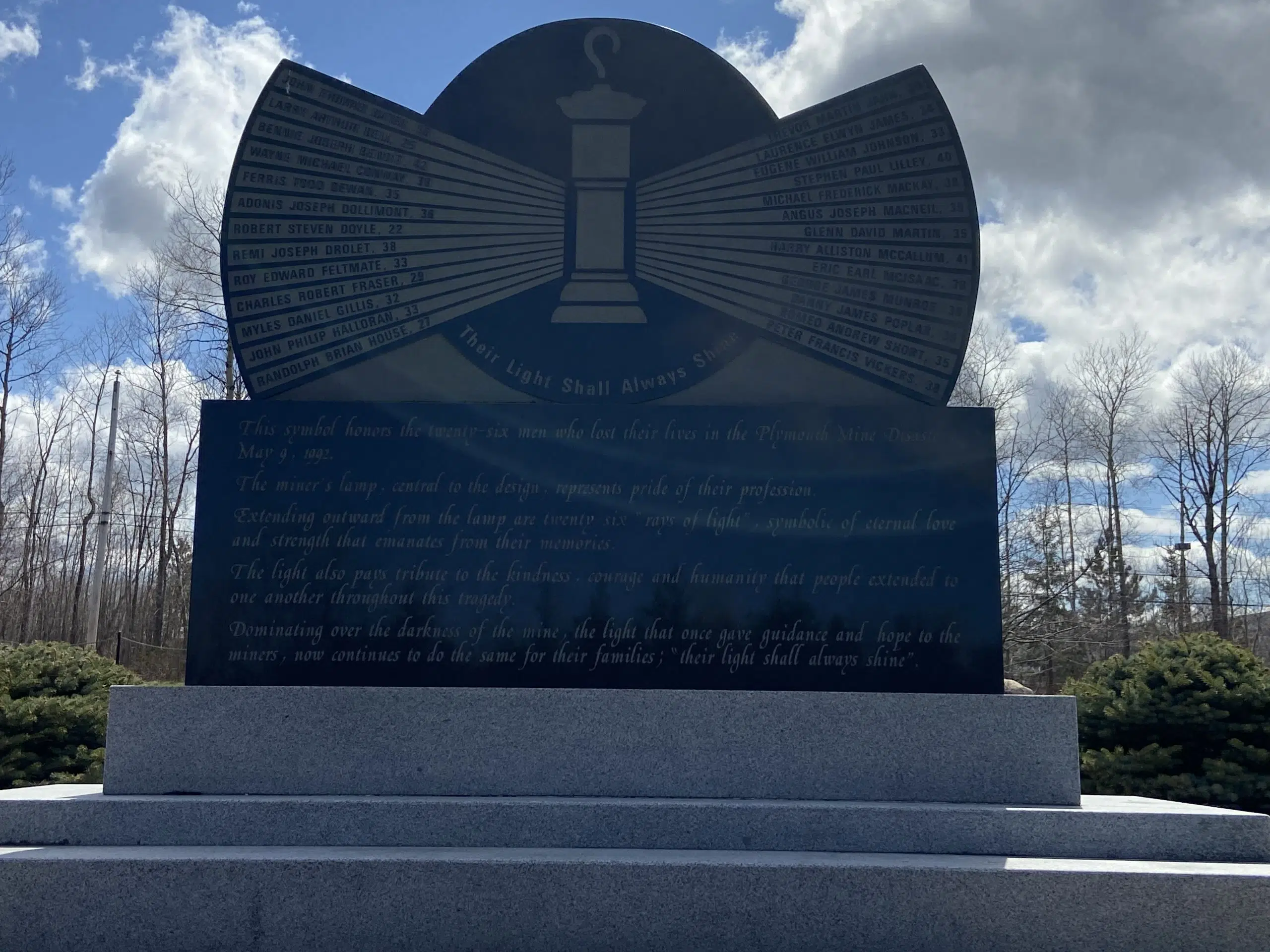Thirty years ago on Monday, we woke up to the emerging news of an underground explosion at the Westray Mine in Plymouth, N.S.
Dignitaries, labour groups and residents are preparing to take part in ceremonies at the memorial site to remember the 26 coal miners who died in the tragedy on May 9, 1992.
Memorial in Pictou County for the 26 miners killed underground.
At 5:20 a.m. on that Saturday morning, sparks from their mining machine ignited methane gas that had not been properly ventilated.
The methane, combined with dangerously high levels of coal dust that had not been stone-dusted created a massive explosion that rocked the community.
The men killed ranged in age from 22 to 56 years-old. Recovery crews found 15 bodies but 11 were never recovered.
President of the Nova Scotia Federation of Labour, Danny Cavanagh says no one is prepared to hear a knock on the door telling them their loved one won’t be coming home.
“It’s devastating for families, you know whether it’s the 26 families who realized on that day that they had a family member who was not going to come back home again. But it’s no different today for families. Last year we had 20 workers in this province killed or injured because of work.”
The mine had been open less than eight months when the explosion occurred. A public inquiry blamed mine management, bureaucrats and politicians for the tragedy, which many felt could have been avoided.
“The Westray story is a complex mosaic of actions, omissions, mistakes, incompetence, apathy, cynicism, stupidity and neglect,” said Mr. Justice Peter Richard in his report.
The archway into the memorial is made out of coal extracted from the mine in Plymouth, N.S.
The mine officially opened on 11 September, 1991 and in its first two months, experienced four roof collapses.
A few weeks before the disaster, an order was issued by a provincial inspector to have the coal dust cleaned, but the order was never enforced, even during a return visit just days before the explosion.
Cavanaugh explains the disaster brought concerns around workers’ safety to the forefront and the Westray Law came into effect in 2004 so people could be criminally prosecuted for workplace harm.
“That law has been enforced since 2004. Sadly, there have been less than 20 charges across the country laid under the Westray legislation. And there has been only one charge in Nova Scotia laid under that legislation. That charge was essentially thrown out of court. The person being charged was acquitted. So, that’s a pretty sad detail. I don’t think the Westray Law is working as intended.”
Cavanagh believes more charges would be laid if police were better trained to investigate a workplace tragedy as a criminal investigation.
He also believes more work is needed to educate kids on workplace safety.
The group is marking the 30th anniversary by working with schools to educate kids who are close to the age of 16 about their rights at work.
“We always need to remember tragedies like the Westray Mine disaster, even though that was thirty years ago, there are still lessons to be learned from that,” Cavanagh says. “We need to do better at educating our young people about the rights and responsibilities when it comes to occupational health and safety.”
He says employers also need to be reminded of their duty to provide safe workplaces.
The Nova Scotia Federation of Labour represents about 7,000 unionized workers in the province.
With files from Steve MacArthur and Rylie Peacock.




